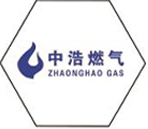
Nov . 25, 2024 13:20
Back to list
pressure reduction skid
Understanding Pressure Reduction Skids A Key Component in Fluid Transport Systems
In the world of fluid transport systems, pressure management is crucial for ensuring efficiency, safety, and reliability. One vital component that serves this purpose is the pressure reduction skid. Understanding what a pressure reduction skid is, its functions, and its benefits can significantly impact the performance of various industrial systems, including oil and gas, water treatment, and chemical processing.
What is a Pressure Reduction Skid?
A pressure reduction skid is a packaged system equipped with the necessary components to reduce high-pressure fluids to lower operating pressures suitable for downstream processes. Typically, it consists of pressure regulators, control valves, flow meters, filtration systems, and safety devices, all mounted on a robust platform or skid. The skid design allows for easy installation, transport, and integration into existing pipeline systems, making it a versatile solution for many industries.
Functions of Pressure Reduction Skids
The primary function of a pressure reduction skid is to maintain desired pressure levels while minimizing fluctuations. This regulation is crucial because too high or too low pressure can lead to equipment failure, inefficient process operation, or even hazardous situations.
1. Pressure Regulation Pressure reduction skids are designed to control the downstream pressure to a predetermined level, ensuring that the system operates within a safe range. This is particularly important in systems where variations in pressure can affect product quality or operational safety.
2. Flow Management By managing pressure, these skids also play an essential role in regulating flow rates within a system. Controlled flow rates are vital for processes such as mixing, chemical reactions, and material transport.
3. Protection Mechanism Pressure reduction skids often include safety devices like pressure relief valves and alarms to monitor system performance continuously. These features help prevent overpressure situations that could lead to pipeline ruptures or accidents.
Benefits of Pressure Reduction Skids
Incorporating pressure reduction skids into fluid transport systems provides several advantages
pressure reduction skid

1. Improved Safety By preventing dangerous pressure levels and ensuring a stable operating environment, pressure reduction skids enhance worker safety and reduce the risk of accidents in hazardous environments.
2. Operational Efficiency Consistent pressure regulation contributes to smoother operations, increased system longevity, and reduced downtime. This improved boiler or pump performance translates into cost savings for companies.
3. Space Efficiency The skid design allows for compact construction, which can be easily installed in tight spaces or integrated into existing facilities without extensive modifications.
4. Customization Pressure reduction skids can be designed and tailored to meet specific project requirements, with components selected based on fluid type, pressure, temperature, and flow characteristics.
5. Maintenance With all components easily accessible on a single platform, maintenance and regular inspections become less time-consuming and complex. This ease of maintenance contributes to overall system reliability.
Applications of Pressure Reduction Skids
Pressure reduction skids are utilized across various industries
- Oil and Gas They are used in gas processing plants to reduce the pressure of transporting gas through pipelines safely. - Water Treatment In municipal water systems, these skids help regulate the pressure of treated water before it enters distribution networks. - Chemical Industry In chemical processing plants, controlling fluid pressure is essential for safe and efficient operations.
Conclusion
Pressure reduction skids are indispensable components in ensuring safe and efficient operation across various industries. By regulating pressure, managing flow rates, and providing protective mechanisms, they contribute significantly to the integrity and reliability of fluid transport systems. As industries continue to evolve and demand more from their infrastructure, the role of pressure reduction skids will only become more critical in maintaining safe and efficient operations. Understanding these systems and their functionalities can pave the way for better design, operation, and maintenance in complex fluid management systems.
Latest news
-
Safety Valve Spring-Loaded Design Overpressure ProtectionNewsJul.25,2025
-
Precision Voltage Regulator AC5 Accuracy Grade PerformanceNewsJul.25,2025
-
Natural Gas Pressure Regulating Skid Industrial Pipeline ApplicationsNewsJul.25,2025
-
Natural Gas Filter Stainless Steel Mesh Element DesignNewsJul.25,2025
-
Gas Pressure Regulator Valve Direct-Acting Spring-Loaded DesignNewsJul.25,2025
-
Decompression Equipment Multi-Stage Heat Exchange System DesignNewsJul.25,2025

